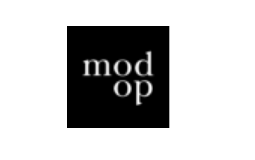In the dynamic landscape of the digital era, successful communication goes beyond the traditional realms of running ads. It’s about harnessing technology to enhance the effectiveness of your message, creating a meaningful connection with your audience. To truly excel in the digital realm, a comprehensive strategy is essential—one that involves commitment, careful planning, and a continuous commitment to education.
1. Commitment to Strategy: The foundation of any successful digital communication strategy lies in a firm commitment. It’s not just about having a plan; it’s about dedicating yourself to its execution. Your strategy should align seamlessly with your brand identity and business objectives, ensuring a consistent and authentic voice across all channels.
2. Creating a Roadmap: Developing a roadmap is crucial for navigating the vast digital landscape. Define your goals, outline key milestones, and establish a timeline for implementation. A well-structured roadmap serves as a guide, keeping your team focused and accountable throughout the journey.
3. Content Pillars: Craft a content plan with pillars that represent the core themes of your brand. These pillars provide a framework for creating diverse and engaging content that resonates with your audience. Consistency in messaging builds trust and reinforces your brand identity.
4. Continuous Education: In the ever-evolving digital landscape, staying informed is paramount. Commit to continuous education or ‘agucation’—a blend of agility and education. Embrace new technologies, trends, and best practices to stay ahead of the curve and adapt your strategy accordingly.
5. Internal Communication: Build your plan internally by fostering effective communication within your organization. Ensure that every team member is aligned with the overarching strategy. Internal channels serve as a platform to share updates, successes, and reinforce the company’s mission.
6. External Media Partners: Collaborating with external media partners is a strategic move to extend your reach. These partnerships offer a different perspective, allowing your company to intake information from target news sources. External media partners can amplify your message and drive new interest in your brand.
7. Confidence and Focus: Confidence and focus are the cornerstones of a successful digital communication strategy. Own your narrative and key messages in the market. By staying confident in your approach and focused on your goals, your company can effectively control the narrative and shape its public perception.
Conclusion: In conclusion, the real value of digital communication lies in a holistic approach that integrates commitment, strategic planning, continuous education, and effective internal and external communication channels. Embrace the power of digital to tell your story, reinforce your messages, and connect with your target market. In a world where attention is fleeting, confidence and focus will set your company apart, allowing you to own your narrative in the digital landscape.
Written by: Jim Eadie












